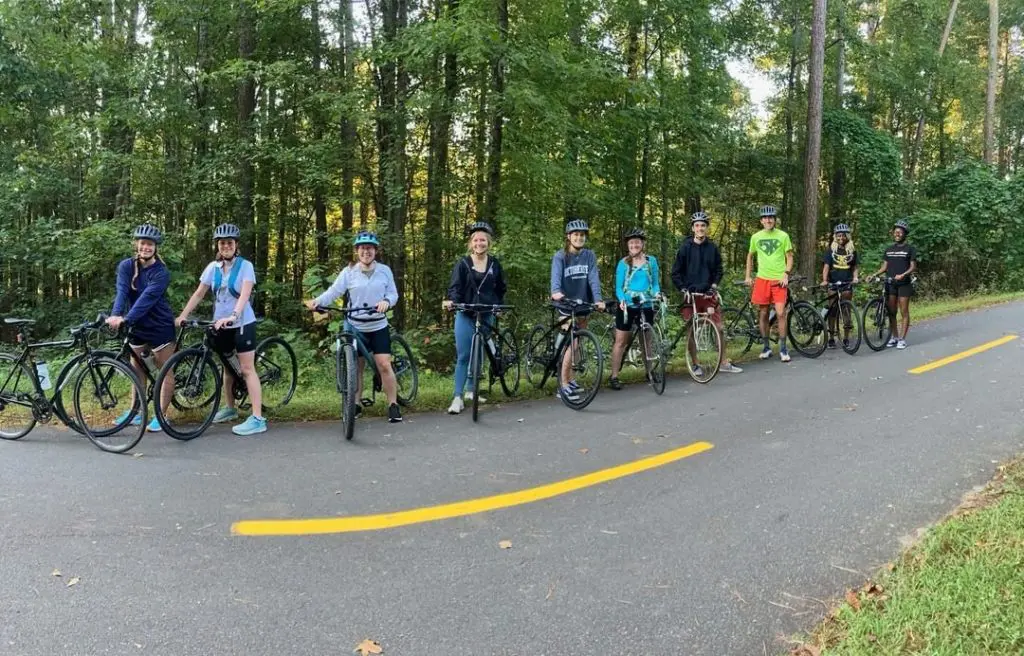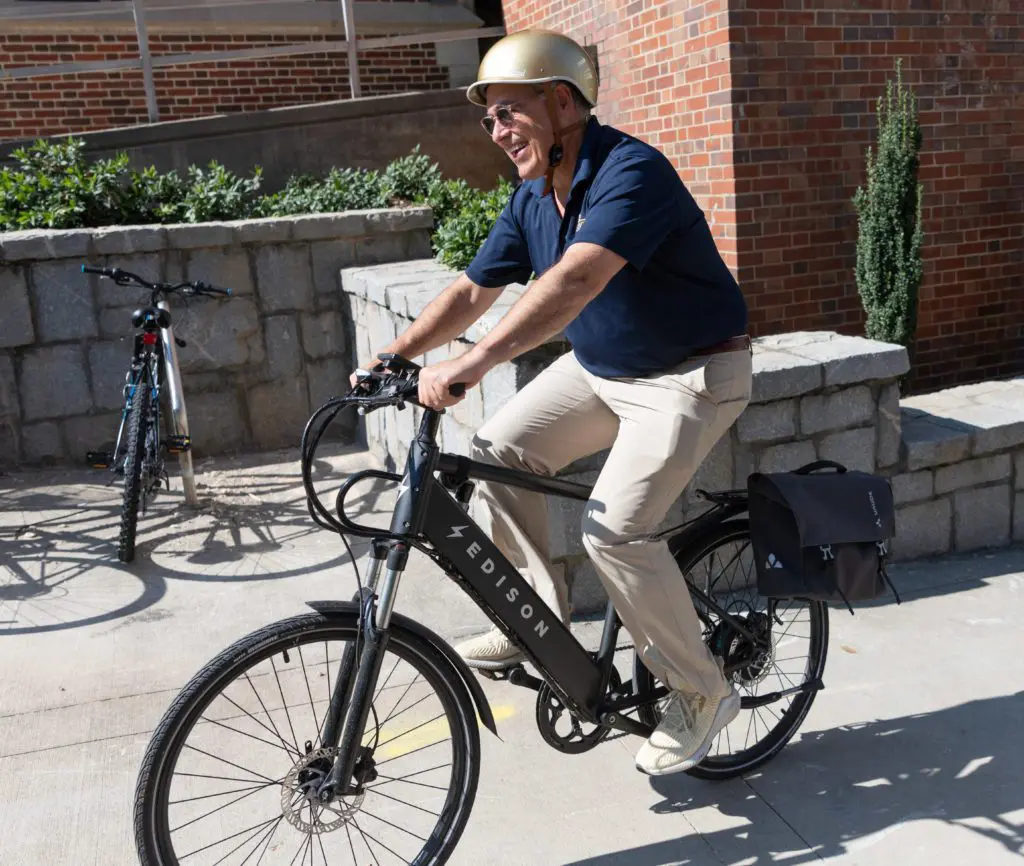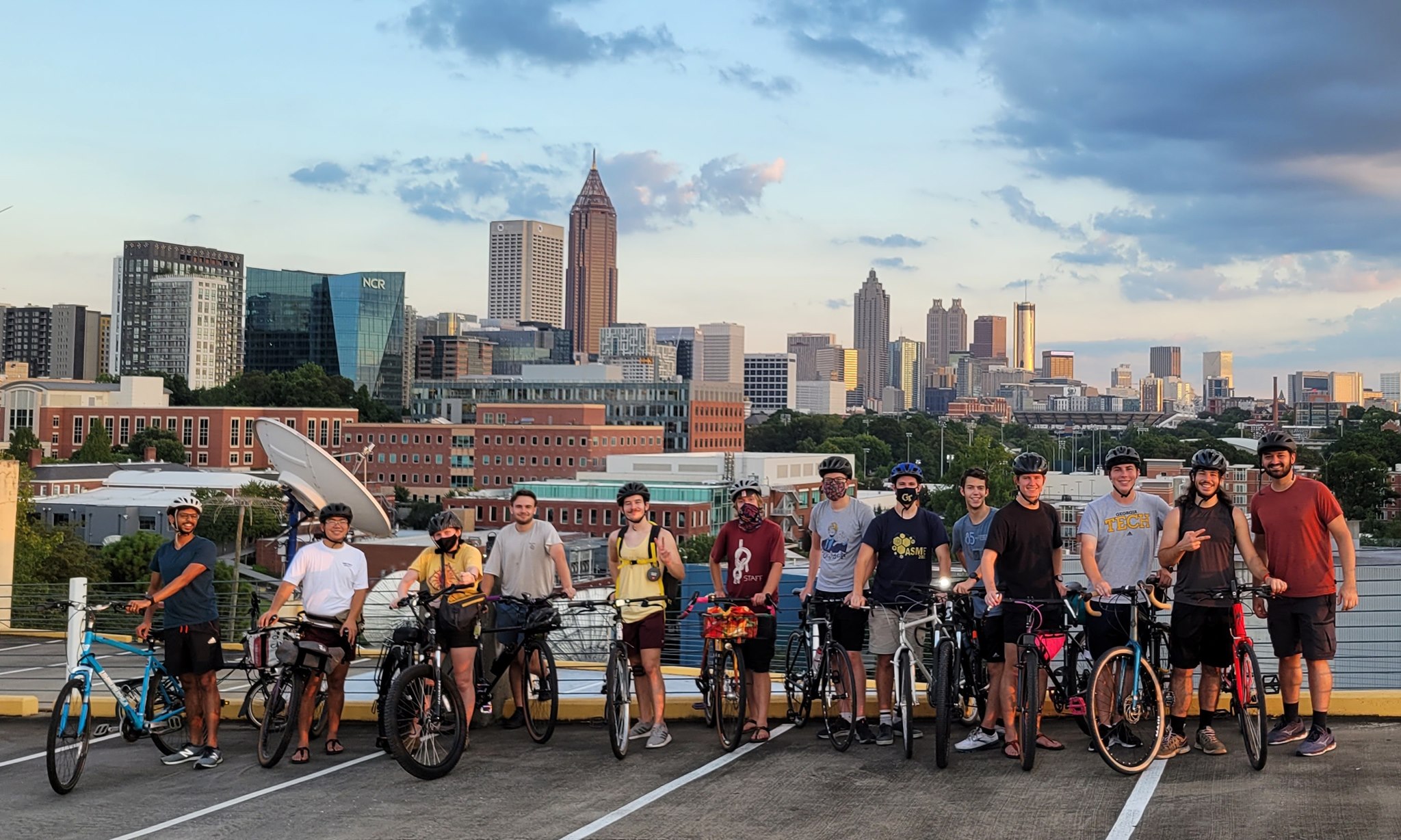Each Biketober, we think about how to engage our community for positive change. Metro Atlanta is home to many colleges, whether four-year universities, technical colleges or community colleges, and there are over 130,000 undergraduate students alone. To help get them inspired to get rolling this Biketober, we spoke with Dr. Gabriel Kuperminc, Professor of Psychology and Public Health at Georgia State University, about health interventions for college students and how schools and communities can use the college experience to help students try cycling this Biketober and beyond.
What Are Health Interventions?
Health interventions are strategies to help empower communities to choose healthy practices to produce better outcomes. Dr. Kuperminc explains that the term “health intervention” doesn’t have to mean something dramatic. He says that, so long as it is intentional, thoughtful and evidence-based, many strategies can be effective! Examples can include classes, campaigns, policies or infrastructure that support a community health goal.
For Interventions, Consistency Is Key
Dr. Kuperminc says when considering strategies for health behavior change, sustainability is a major consideration. Health interventions must be created with the intent of supporting changes that persist over time.
To achieve long-lasting positive health outcomes, understanding the mental and physical barriers to trying and adopting a new routine is vital. Therefore, one of the most important elements of promoting behavior change, whether in or outside of the college environment, is providing consistent, easy access to information and infrastructure to make better choices and build confidence. When multiple intervention strategies work together, programs have a better chance of making a lasting impact!
College Health Intervention that Can Help Encourage Students to Get Biking:

Photo courtesy of KSU Department of Sports and Recreation
- Identify the behaviors that need to change: Sometimes people don’t recognize that their habits need to change, so demonstrating how choices like driving alone have a negative impact on health and the environment can help to point students in the right direction. Beyond awareness, it is key to letting people know that they are capable of change!
- Foster a cycling culture on campus: Organize group rides or clubs to help make students feel like biking can be a fun and social way to get around! Colleges can also host classes on bike safety or organize group commutes from common neighborhoods to campus. For example, Georgia Gwinnett College hosts an annual ride from Lawrenceville to campus to help students get acquainted with the paths that connect the two. Campuses can also build a cycling culture by hosting their own events and or creating teams during Biketober! Strategies that address social norms are important to enacting long-term change.
- Advocate for policies that support cycling: Campuses can work to create policies that support safe cycling on campus. For example, schools can provide subsidies to students who choose to ride their bike around campus to foster a culture of clean commuting and to reduce parking lot overcrowding.
- Invest in cycling infrastructure: Investing in bike infrastructure is essential to continuing to encourage people to ride, as it makes it more conducive for people to make that choice. From creating protected bike lanes to adding bike racks on campus, these changes make it safer and easier for people to explore cycling as an option. For colleges whose campuses are spread throughout a city, working with the city to develop such infrastructure not only strengthens the relationship between campus and city, but can contribute to improvements that help the community as a whole!
Why Is College a Good Time for Health Intervention Strategies?


Change During Change Is Easier
No matter how you do it, college is a period of change. For some, it means heading to a new place for a four-year campus experience. For others, it means commuting to a campus from their home. It may mean returning to the classroom after some years in the workforce, or it can be a part of a progression to adulthood. No matter how one gets there or where or when they go, college is a period of transition. It brings new responsibilities, new people, new ideas and new opportunities.
All this change can actually be beneficial to encouraging new choices. Dr. Kuperminc says that transition points are a good place to look to make meaningful change.
For students, routines and responsibilities shift each semester with their new class schedules. This fosters a dynamic space for students to continuously re-evaluate their wants and needs, which can include considering how biking can fit into their lives!
Biking Is Good for the Student Budget
A 2019 study from the Association of American Colleges and Universities estimates that 70% of two-year college students and 61% of four-year college students experience some form of food or housing insecurity.
That means that many students are not able to afford a car to travel to campus or to a job. Biking can offer a financially sustainable option for student commutes, especially if colleges provide subsidies or incorporate bike shares on campus.
Mental and Physical Health Can Be Overlooked
While this period of change can give students the opportunity to consider shifts to their routine, college can also cause stress and burnout. Stress and burnout, as well as anxiety and depression in students can cause them to overlook their mental and physical health as they work to get by. Developing programs that build physical and mental health routines, such as through cycling or meditation, can help students find space to prioritize their own well-being.
Campus Is a Community
More than cities or towns, campuses are community spaces with resources that are dedicated exclusively for the students they serve. College often creates an environment where resources and information are freely available to students, like campus health clinics and counseling centers. Additionally, information on this host of resources is often housed in a central location, whereas, outside of the college space, people regularly search high and low to find information on resources they need. In this way, colleges are a great place to add programs focused on health behavior change because students need only explore their campus newsletter or library bulletin board for information.
Looking to Bike on Your Campus?

Photo courtesy of KSU Department of Sports and Recreation
Check out these cycling clubs and opportunities on or near campus.
- Cycling at Georgia Tech: shares tips on bike safety, bike shares and repair stations
- Kennesaw State University: offers tons of resources, from bike maps to tips for bike commuting, and a bike shop for students that provides comprehensive bike services and rentals
- Georgia State University & Georgia Perimeter College (Dunwoody): hosts group rides for student commuters and offers bike rentals for $2 per day
- Emory University: rent a bike for the entire semester for just $95 or attend classes with the school’s Spokes Council or Bike Social group
- Clark Atlanta University: offers indoor cycling classes to help you get comfortable
- Morehouse College: Beyoncé and Peloton partnered in 2020 to gift indoor bikes to Morehouse (and other HBCUs, including Spelman and Clark Atlanta!)
- Spelman College: offers an on-campus bike share
- Savannah College of Art and Design: encourages students to get cycling on campus
- Mercer University (Atlanta): encourages cycling for outdoor recreation on one of the many paths in Atlanta
- Agnes Scott College: offers free bike rentals to students
- Gwinnett Technical College: connect with other cyclists in the Gwinnett County community
- Atlanta Technical College: reach out to fellow students to organize a ride
- Oglethorpe University: encourages cycling around campus and throughout Atlanta
But of course, whether you’re at college or not, it’s never too late to get started doing something new and healthy.
Start your cycling adventure this Biketober!
- Register at Biketober.com
- Log your rides
- Win prizes!

Cover photo: Georgia Tech students on a group ride, courtesy of Georgia Tech
